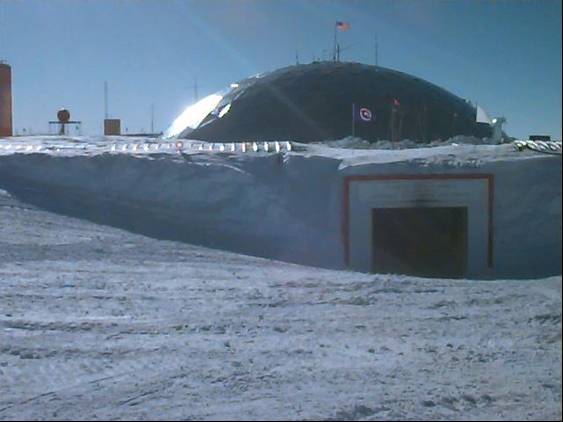Antarctica is centered at the Earth's south pole, and so receives very little sunlight. Much of the sunlight it does receive is reflected back to outer space since most of the continent is covered
with snow and ice, which further cools the continent.
As a result, Antarctica is the
coldest place on earth. It also "manufactures" cold air masses, which are continuously flowing off the Antarctic
ice cap, sometimes producing winds in excess of 100 mph. All of this cold air leaving Antarctica must be replaced, however, and so
warm air flows from the relatively warmer ocean waters surrounding the continent over the ice cap, warming it and depositing
new snow.
As snow continues to fall on the continent over the years, the ice cap slowly flows toward the sea, creating ice shelves that
ring the continent. These ice shelves last so long that the are individually named, but eventually they must break off and float
out to sea, so that they can be replaced by the newer ice flowing from the continent's interior.
Because the ice shelves last for centuries, it is not really known how exactly long they typically last before finally breaking off.
|



